Throughout Western history ladies were nearly always relegated to wearing skirts and dresses instead of pants. This tradition continued into the mid-20th century when high fashion dictated the fit-and-flare silhouette that is now looked upon as the epitome of femininity. As the era of the New Look faded away pants for women became more and more common. But, even before this sea change, there were a few instances here and there when ladies wearing pants was considered acceptable- though not without some controversy.
Bloomers
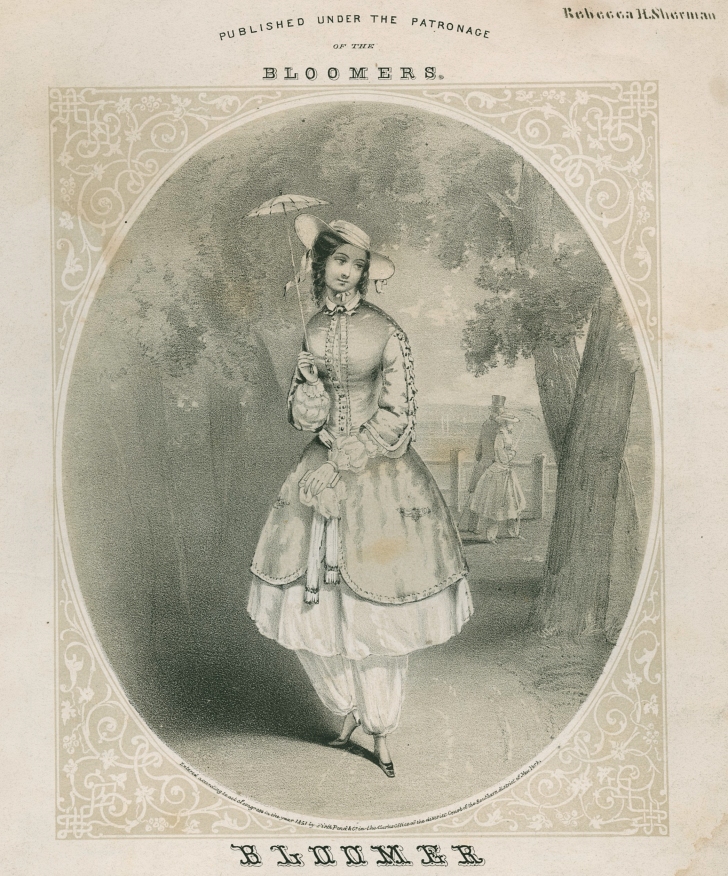
As a form of more “rational dress” the women’s activist, Amelia Bloomer, took to wearing Turkish style pantaloons in 1851 and over them a skirt that fell just below the knee. A relaxed waist, free from corsetry, was also employed in the name of freedom of movement. This outfit was in stark contrast to the very voluminous skirts and nipped-in waists of the era that constituted the fashionable silhouette and which hindered movement. Many were concerned with safety since the trailing skirts dragged on the ground. While the press ridiculed the new pants outfit, women wrote to Bloomer by the thousands asking for sewing patterns to make their own pantaloons after seeing them in her magazine, The Lily.
This style was adopted later for use in exercise and swimming, but didn’t really catch on as everyday attire.
Turkish Style Formal Wear
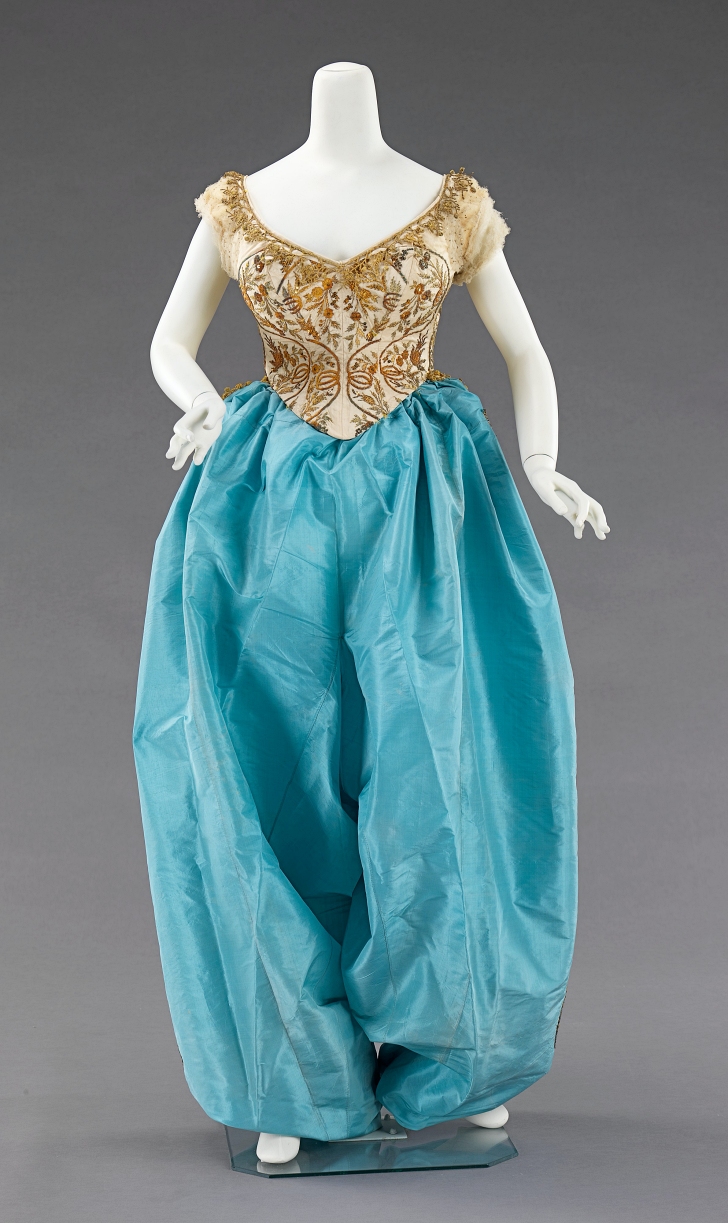
The fascination with Turkish pants continued for some time into the latter part of the 1800s, with this gorgeous example from the House of Worth jumpsuit (1870) showing that -for women of means at least- the idea of wearing pants wasn’t entirely done with. The beaded bodice and huge, gathered silk pants legs are an opulent expression of the desire to wear pants, albeit in a very feminine manner. Outfits like these were still turning heads in the 1910s.
Women’s Independence
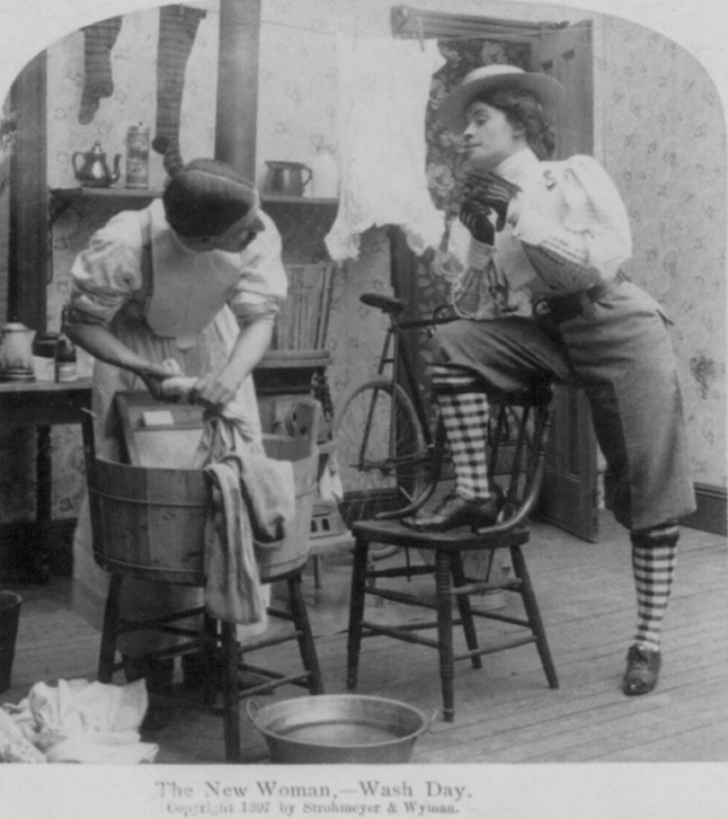
The craze for cycling had made plus fours pants for women the ideal outfit for pedaling around town. This kept women’s legs free to do to the work of cycling unencumbered. But, women wearing pants and having their own mode of transport were both still radical ideas at the time. Satires like the one above showed women going off on cycling trips on wash day, leaving their husbands behind to tackle the hardest cleaning job in the house. Jabs like these did not stop women from cycling, though some did cycle only in skirts so as to keep their feminine air.
The 1910s Fashion Fad
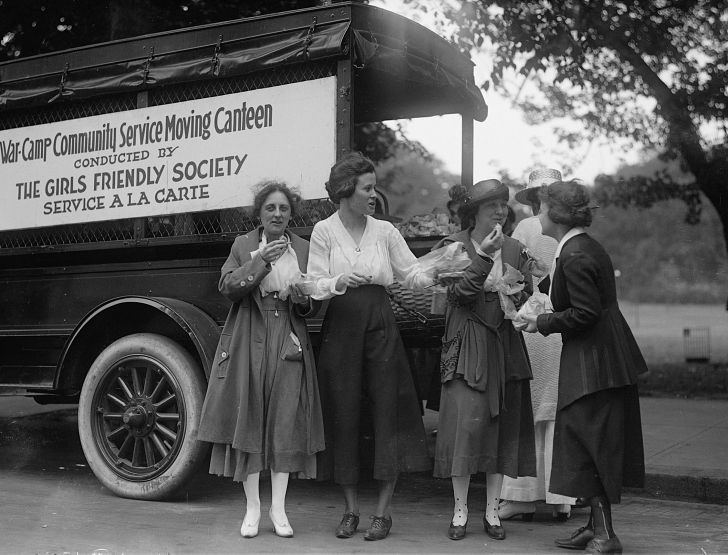
Culottes, trouser skirts, harem pants…they were all children of the same movement. After the French designer, Poiret, rose to fame in 1911 with his elegant haute couture harem pants, women of the 1910s were spotted wearing these skirt-like pants both for formal and for informal occasions. From wealthy women who traveled to Paris to have their own versions custom-made to average women on the street, pants were becoming the statement pieces to own. Yet, they were still considered quite controversial at the time.
Rosie the Riveter
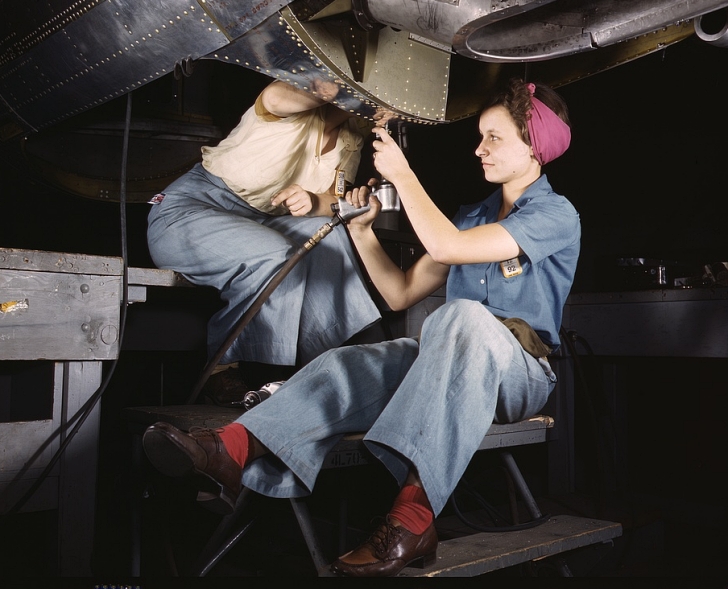
As World War II dragged on, women took the places of male factory workers who were called up to join the armed forces. Sturdy, ready-made workwear pants for women weren’t that common at the time and many women wore their husbands or father’s pants pants to work. Jeans, overalls, coveralls, and slacks were worn for tough jobs like riveting aircraft, making munitions, welding, and machining parts for military craft.
These make-do pants often looked rather large on the petite ladies. Even sewing patterns for women’s trousers of the era included the full legs and hips found in menswear at the time. The normalization of pants-wearing for women did enter the silver screen as well, with movie stars wearing elegant pants suits in the movies.
Jeans for Women
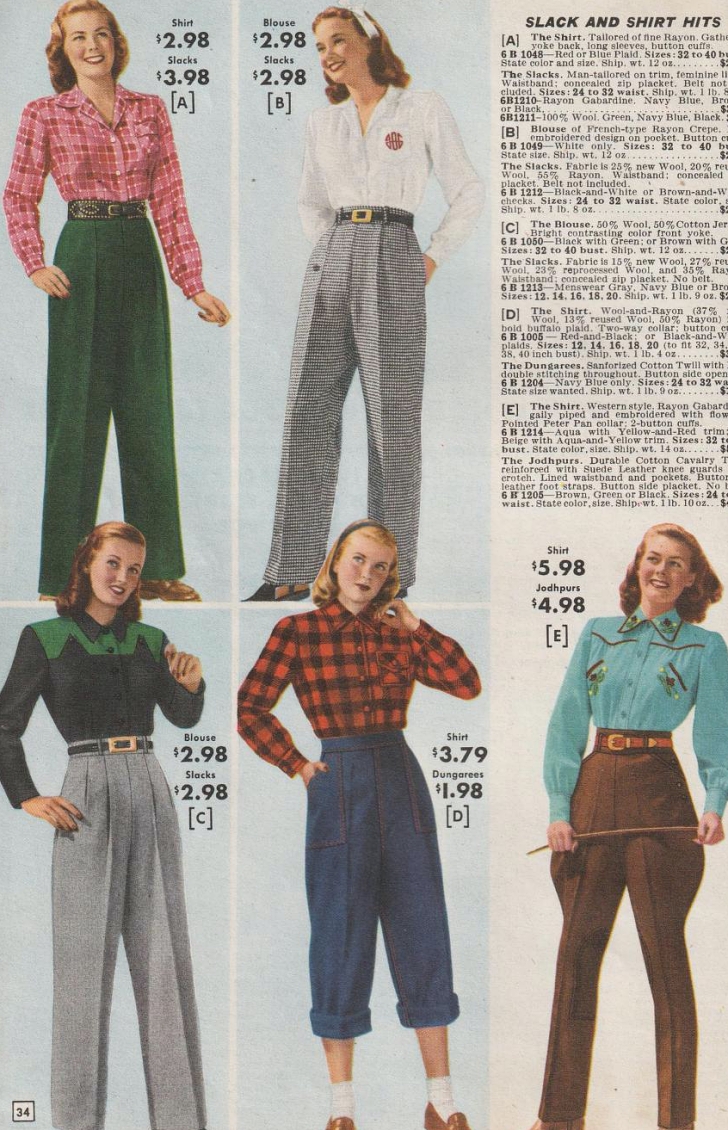
The first jeans to be manufactured solely for women (called Lady Levi’s) were introduced in 1934, but were not considered mainstream until many decades later. Jeans became the workwear of choice for women doing farm work, but later came to symbolize freedom, youth, and a more relaxed attitude towards life.
During the 1950s jeans were becoming more common leisurewear. By the 1970s jeans were everywhere for both and women and we haven’t looked back since.





